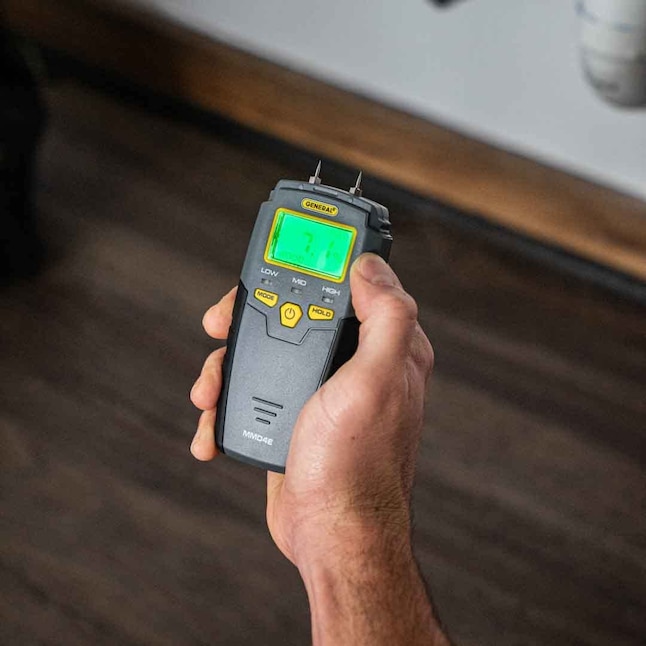Exactly How a Moisture Meter Can Assist You Preserve Ideal Conditions in Your Home or Office
Exactly How a Moisture Meter Can Assist You Preserve Ideal Conditions in Your Home or Office
Blog Article
Explore the World of Moisture Meters: Every Little Thing You Required to Know
In the world of moisture meters lies a globe of precision and functionality that usually goes unnoticed. These tools, while relatively straightforward, hold a wide range of information that can significantly affect numerous sectors and applications. Comprehending just how moisture meters run, the different types offered, and their varied uses can drop light on their relevance in making certain quality and performance. By checking out the intricacies of moisture meters, one can uncover a valuable device that goes beyond plain measurement, using insights that can make a considerable difference in various fields.
Exactly How Moisture Meters Work
Moisture meters operate by measuring the electrical conductivity or capacitance of products to determine the dampness content existing. These meters are vital tools across various sectors, consisting of agriculture, building and construction, and woodworking. By making use of different techniques such as pin-type or pinless innovation, wetness meters give precise readings that assist experts make notified decisions.
Pin-type dampness meters function by putting the sharp pins into the material being examined. On the other hand, pinless dampness meters utilize electro-magnetic signals to check a bigger location without creating any damages to the product's surface.
No matter of the approach utilized, dampness meters play an essential role in stopping problems such as mold and mildew growth, structural damages, or item problems triggered by excess dampness. Understanding how these meters work is vital for making certain the quality and stability of materials in numerous applications.
Kinds of Moisture Meters
Provided the vital function dampness meters play in numerous sectors, it is important to comprehend the different kinds readily available to professionals for properly analyzing moisture degrees - Moisture Meter. There are largely 2 major kinds of wetness meters: pin-type and pinless moisture meters

On the various other hand, pinless moisture meters use electro-magnetic sensing unit plates to check a bigger location of the product without causing any kind of damages. This kind appropriates for promptly scanning big locations and is typically utilized for flooring, walls, and ceilings. Pinless meters are practical for taking readings on completed surfaces without leaving any kind of noticeable marks.
Both types of dampness meters have their advantages and are chosen based on the particular needs of the work available. Comprehending the distinctions in between these types is crucial for experts to make accurate moisture assessments.
Applications Across Industries
Building and construction experts rely on wetness meters to evaluate the dampness degrees in building materials like concrete, wood, and drywall, which is important for preserving architectural stability and preventing concerns like rot or mold. The floor covering market utilizes wetness meters to determine the dampness material in subfloors before setting up different flooring coverings, protecting against expensive problems due to excess dampness. In the food industry, wetness meters are utilized to check and control moisture levels in items such as grains, nuts, and dried fruits to maintain quality and top quality.
Tips for Using Dampness Meters
Use the moisture meter's calibration settings to ensure exact readings when measuring the moisture material in various products. Furthermore, make certain the meter is established to the correct dampness array for the product you are gauging to acquire the most precise results.
When making use of a pin-type moisture meter, insert the pins to the proper deepness advised for the product being evaluated. This guarantees that the moisture analyses are taken from the appropriate deepness within the product, supplying a more precise representation of its dampness material. For pinless moisture meters, bear in mind to maintain correct call with the material's surface area to get dependable analyses.
Regularly inspect and change the batteries in your moisture meter to prevent incorrect analyses because of reduced power. When not in usage to prolong its lifespan and keep its precision, Store the meter in a completely dry and secure area. By following these pointers, you can make best use of the performance of see your dampness meter and acquire accurate moisture content dimensions across various products.
Maintenance and Calibration
To make certain the precision of wetness content measurements, normal upkeep and calibration of the wetness meter are essential actions in its proper functioning. Maintenance entails maintaining the moisture meter webpage tidy and totally free from debris that can impact its readings. It is vital to adhere to the supplier's standards for cleaning to stop damages to the device. In addition, regular calibration is needed to validate the accuracy of the readings. Calibration adjusts the dampness meter to guarantee that it provides trustworthy and consistent results.
Calibration needs to be carried out regularly, particularly if the dampness meter is made use of frequently or in essential applications where exact dimensions are called for. Several moisture meters come with calibration tools or can be adjusted by specialist solutions. Moisture Meter. It is suggested to keep a log of calibration dates and results to track the performance of the moisture meter over time. By maintaining and calibrating the moisture meter frequently, customers can rely on the precision of the wetness material measurements obtained.
Final Thought

To conclude, wetness meters play a vital role in numerous industries by precisely gauging the moisture material of products. Understanding just how these tools function, the various kinds available, and appropriate upkeep and calibration are important for getting dependable outcomes. Whether in construction, farming, or manufacturing, using dampness meters helps make certain quality control and effectiveness in procedures.

In verdict, wetness meters play a crucial function in different industries by accurately determining the dampness content of materials.
Report this page